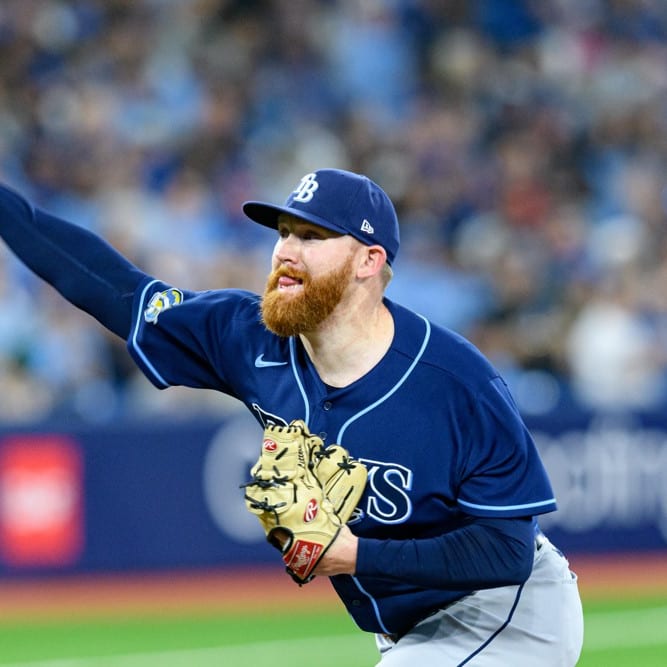This article is part of our Farm Futures series.
Each Tuesday a standout performer from a recent game will be profiled here and then a snapshot of the success and failure of notable players in a specific league will be provided. This week's piece focuses on Yankees pitching prospect Luis Severino, who could be the next big-name prospect to be called up from the minor leagues, followed by a look at what some other notable pitchers in the International League have been up to so far this season.
 Luis Severino, RHP, Triple-A Scranton/Wilkes Barre
Luis Severino, RHP, Triple-A Scranton/Wilkes Barre
June 21 against Triple-A Lehigh Valley: 7.2 innings, 4 H, 2 R, 0 ER, 0 BB, 7 K
In 13 starts between Double-A and Triple-A: 2.81 ERA, 1.05 WHIP, 66:18 K:BB ratio in 67.1 innings
Severino got a swinging strikeout on a high fastball against the first hitter he faced in Sunday's start against Lehigh Valley, which would prove to be a microcosm of the entire outing. Everything starts with Severino's fastball, which is 70-grade, sitting in the mid-90s.
The first thing one should notice when watching Severino is the odd delivery. All of his effort/velocity comes from his quick arm action. His legs do very little of the work, as it's a short, lazy stride, almost as if he's just playing catch. He does not repeat his finish, demonstrating poor, ever-changing posture from pitch to pitch. On one offering he'll stay almost upright for the entire delivery, and then on the next offering he will lose his balance, falling off to the
Each Tuesday a standout performer from a recent game will be profiled here and then a snapshot of the success and failure of notable players in a specific league will be provided. This week's piece focuses on Yankees pitching prospect Luis Severino, who could be the next big-name prospect to be called up from the minor leagues, followed by a look at what some other notable pitchers in the International League have been up to so far this season.
 Luis Severino, RHP, Triple-A Scranton/Wilkes Barre
Luis Severino, RHP, Triple-A Scranton/Wilkes Barre
June 21 against Triple-A Lehigh Valley: 7.2 innings, 4 H, 2 R, 0 ER, 0 BB, 7 K
In 13 starts between Double-A and Triple-A: 2.81 ERA, 1.05 WHIP, 66:18 K:BB ratio in 67.1 innings
Severino got a swinging strikeout on a high fastball against the first hitter he faced in Sunday's start against Lehigh Valley, which would prove to be a microcosm of the entire outing. Everything starts with Severino's fastball, which is 70-grade, sitting in the mid-90s.
The first thing one should notice when watching Severino is the odd delivery. All of his effort/velocity comes from his quick arm action. His legs do very little of the work, as it's a short, lazy stride, almost as if he's just playing catch. He does not repeat his finish, demonstrating poor, ever-changing posture from pitch to pitch. On one offering he'll stay almost upright for the entire delivery, and then on the next offering he will lose his balance, falling off to the left side of the mound. When he falls off to the side, it is usually when he throws a changeup or a slider, and when he throws his patented high fastball, Severino basically finishes standing up straight. For hitters with elite bat speed, this could be a tell that they can use to their advantage based on the movement of his body as he releases each pitch, but for the most part, the main concern with this is being able to maintain his control, and that has not been an issue for the 21-year-old to date.
It is a testament to his stuff that he is able to get away with such an inconsistent delivery, and it's quite a feat that he commands his stuff as well as he does with occasionally awful posture. For guys that don't fit into a blatant "I've seen that work before" box, it is important that they continue to prove that they can make their idiosyncrasies work as they climb from level to level, and Severino has yet to fail in his rapid ascent through the Yankees' system.
Darin Ruf got the first base hit of the day off Severino in the second inning, as he waited back on a slider and poked it over the second baseman's head. Severino then notched his second strikeout on another high, rising fastball. After giving up another single on a changeup, Severino then got his second K of the second inning on yet another high fastball. He then got his fourth strikeout, and third of the inning, as Jayson Nix was caught looking on a fastball right down the middle. It wasn't just his fastball that was serving as the out pitch, as Severino notched his fifth strikeout of the game by catching Tyler Henson looking on a beautiful changeup on the outside corner of the plate to end the third.
His changeup gives minor league hitters fits, but I'm not sold that it currently has the deception necessary to qualify as a second plus-plus offering against big league hitters. That said, he doesn't really need it to be elite as long as he is locating his fastball, both inside and outside the zone. The changeup should still be a 55 or 60-grade offering at the next level, and his slider has the potential to be an average or better third pitch.
As weird as it may sound, I think Severino will be able to make his funky delivery work, possibly because of how funky it is. Hitters just don't pick up his fastball, and when they try to sit on it, his secondary offerings turn them into whiff machines. It seemed like the only time the Iron Pigs were able to hit him was when they guessed right on off-speed stuff. His fastball was completely unhittable, even when hitters knew it was coming.
Severino threw 75 of his 97 pitches for strikes and was able to be much more efficient with his pitches than he had been in his first handful of starts at Triple-A. In Sunday's start he retired the side in order in five of his first seven innings and the total hitters he faced (28) exceeded the number of balls he threw (22), which is insane. Severino has thrown at least 90 pitches in eight of his 13 starts between Triple-A and Double-A this year, but he has only gone more than five innings in four of those eight outings. He was not getting hit hard, he just wasn't trusting his stuff as much as he should have against minor league hitters. Now that he seems to have turned that around with Sunday's start, it may only take one or two more outings at Triple-A before the Yankees deem Severino ready to join the big league rotation, though it remains to be seen whose spot he will take when he is eventually promoted.
Minor League Roundup: International League Pitchers
Brian Johnson, Henry Owens and Daniel Norris were covered sufficiently in last week's column but there are still a handful of familiar names pitching in the International League who could debut or return to the big leagues sometime this season.
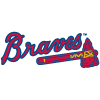 Manny Banuelos, LHP, Triple-A Gwinnett
Manny Banuelos, LHP, Triple-A Gwinnett
2.03 ERA, 1.17 WHIP, 68:34 K:BB ratio through 79.2 innings
RotoWire readers should be familiar with what Banuelos has been accomplishing since joining the Braves organization in the offseason, as we have been hyping his potential as a mid-rotation starter since spring training. However, he topped himself in Monday's outing. The 5-foot-10 lefty tossed nine two-hit shutout innings against Triple-A Indianapolis, lowering his ERA to an International League best 2.03. It was a matter of scheduling that made Matt Wisler the choice to replace Mike Foltynewicz in the Braves' rotation, but Banuelos may now be the most deserving starting pitcher in all of the minors of an eventual promotion to his big league club.
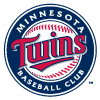 Alex Meyer, RHP, Triple-A Rochester
Alex Meyer, RHP, Triple-A Rochester
5.17 ERA, 1.67 WHIP, 60:30 K:BB ratio through 55.2 innings
Since Meyer was moved from the rotation to the bullpen at Rochester he has been pretty filthy, as expected. The 6-9 righty has cut his ERA from 7.09 to 5.17 and has slashed his WHIP from 1.91 to 1.67 in 16.1 innings since the role change. Now, some of those bullpen appearances have essentially been piggyback starts, throwing at least 55 pitches in three of his eight outings, so it's not like he is being strictly groomed to be a closer. Still, it seems pretty obvious that he is much more effective when he is only asked to turn over a lineup once. Look for the Twins to give him a chance as a setup man in the big league bullpen sometime this summer.
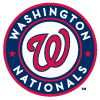 A.J. Cole, RHP, Triple-A Syracuse
A.J. Cole, RHP, Triple-A Syracuse
5.31 ERA, 1.51 WHIP, 27:15 K:BB ratio through 39 innings
It would be hard to argue that Cole got a fair shake, getting just one chance to prove his worth in the big league rotation before being moved to the bullpen and being passed over by Joe Ross and Tanner Roark on the perceived organizational depth chart. Still, it seems like that is exactly what happened, and he has not pitched well enough with Syracuse to inspire much confidence that he will be able to shift that perception going forward. Cole may need a change of scenery at this point, as it will be difficult for him to get an honest look at the big league level in the coming years given the starting pitching talent in the Nationals' organization.
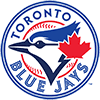 Matt Boyd, LHP, Triple-A Buffalo
Matt Boyd, LHP, Triple-A Buffalo
1.26 ERA, 0.81 WHIP, 82:18 K:BB ratio through 85.2 innings across Triple-A and Double-A
Boyd has only made two starts since being promoted to Buffalo, but he has picked up right where he left off at Double-A. The 6-3 lefty has given up three runs in 12 innings while striking out 12 in his first two starts with Buffalo, and it seems like the Blue Jays may have done it again with an under-the-radar lefty pitching prospect. Boyd, a sixth round pick in 2013, can't match the pedigree of last season's revelation, Daniel Norris, but there is a lot working in Boyd's favor. He sits in the mid-90s with his fastball and at 6-3, 215 pounds, he has the size to hold up after 200-inning seasons in the majors. While Norris is the household name, and the perceived candidate to hop into the Jays' rotation sometime later this season, owners in single-season leagues should continue to monitor Boyd, as he is the shiny new toy. When the top-200 prospect rankings are updated in a few weeks, look for Boyd to easily make the cut.
 Zach Davies, RHP, Triple-A Norfolk
Zach Davies, RHP, Triple-A Norfolk
3.15 ERA, 1.31 WHIP, 60:25 K:BB ratio through 65.2 innings
Davies is a control pitcher, so it is somewhat noteworthy that he raised his walk rate from 6.9 percent at Double-A last year to 9.1 percent this year at Norfolk. Still, he has yet to post an ERA over 3.35 in the upper levels of the minors, so it's hard to write off the ceiling of a No. 4 starter that has been in play since his impressive 2014 season. Don't be surprised if he is given an audition in the Orioles' rotation later this summer or next season if an opportunity presents itself. If Davies were a lefty there would be more fantasy intrigue surrounding his profile, as he is very similar to Cardinals prospect Marco Gonzales in that he has a plus changeup and can show plus command. As a 6-foot righty, however, there will be doubters every step of the way, so Davies will have to walk a very fine line.
 Erik Johnson, RHP, Triple-A Charlotte
Erik Johnson, RHP, Triple-A Charlotte
3.00 ERA, 1.21 WHIP, 88:26 K:BB ratio through 78 innings
Johnson's dominant start to the season is almost enough to make fantasy owners forget his disastrous 2014 season. That said, it is also entirely possible that the 25-year-old righty has just figured out how to get Triple-A hitters out, and he would go right back to struggling if given another chance in the big leagues. His 27.3 percent K-rate is strangely high given his track record, but it's possible he has regained the velocity he lost between 2013 and 2014. Seasoned owners will remember Johnson's previous big league struggles, so if he is recalled by the White Sox this summer, owners in most formats will probably be able to take a wait-and-see approach before dipping their feet back in those waters.








